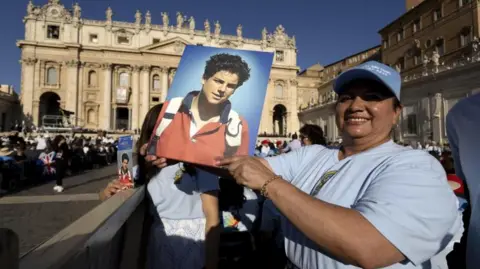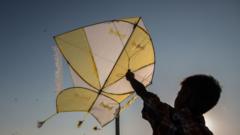The conclave tasked with electing Pope Francis's successor is currently taking place at the Vatican. The cardinals, positioned just below the pope within the Roman Catholic Church's hierarchy, are engaged in a secret balloting process that requires a two-thirds majority for a candidate to be elected. Though the discussions remain confidential and inaccessible to outsiders, the tradition-laden environment of the Sistine Chapel offers insight into the electorial mechanisms used in this significant event.
At the heart of the voting process are various ceremonial objects that play vital roles. The cardinals gather at plain wooden tables in rows, where they will cast their votes. A prominently placed large table at one end accommodates the officials overseeing the proceedings in alignment with the Universi Dominici Gregis (U.D.G.), a document that outlines the regulations governing the papal transition.
Among the voting apparatus is an urn meant for ballot collection, alongside wooden balls and essential stationery items like a needle and twine. The ballots comprise rectangular slips printed with the Latin phrase "Eligo in Summum Pontificem," which translates to "I elect as Supreme Pontiff." Each cardinal inscribes the name of their preferred candidate on their ballot before placing it into the urn, signifying their vote.
To ensure accuracy in the voting process, wooden balls are utilized to keep a tally of the ballots. Each ball corresponds to one cardinal, and as the votes are counted, an attendant removes a ball per ballot cast. A mismatch in the count necessitates the immediate destruction of the ballots, reflecting the stringent care taken during this crucial selection process.
As the world watches in anticipation, the traditions and instruments guiding the papal conclave play a significant role in the governance and continuity of the Catholic Church during this pivotal moment in its history.
At the heart of the voting process are various ceremonial objects that play vital roles. The cardinals gather at plain wooden tables in rows, where they will cast their votes. A prominently placed large table at one end accommodates the officials overseeing the proceedings in alignment with the Universi Dominici Gregis (U.D.G.), a document that outlines the regulations governing the papal transition.
Among the voting apparatus is an urn meant for ballot collection, alongside wooden balls and essential stationery items like a needle and twine. The ballots comprise rectangular slips printed with the Latin phrase "Eligo in Summum Pontificem," which translates to "I elect as Supreme Pontiff." Each cardinal inscribes the name of their preferred candidate on their ballot before placing it into the urn, signifying their vote.
To ensure accuracy in the voting process, wooden balls are utilized to keep a tally of the ballots. Each ball corresponds to one cardinal, and as the votes are counted, an attendant removes a ball per ballot cast. A mismatch in the count necessitates the immediate destruction of the ballots, reflecting the stringent care taken during this crucial selection process.
As the world watches in anticipation, the traditions and instruments guiding the papal conclave play a significant role in the governance and continuity of the Catholic Church during this pivotal moment in its history.




















